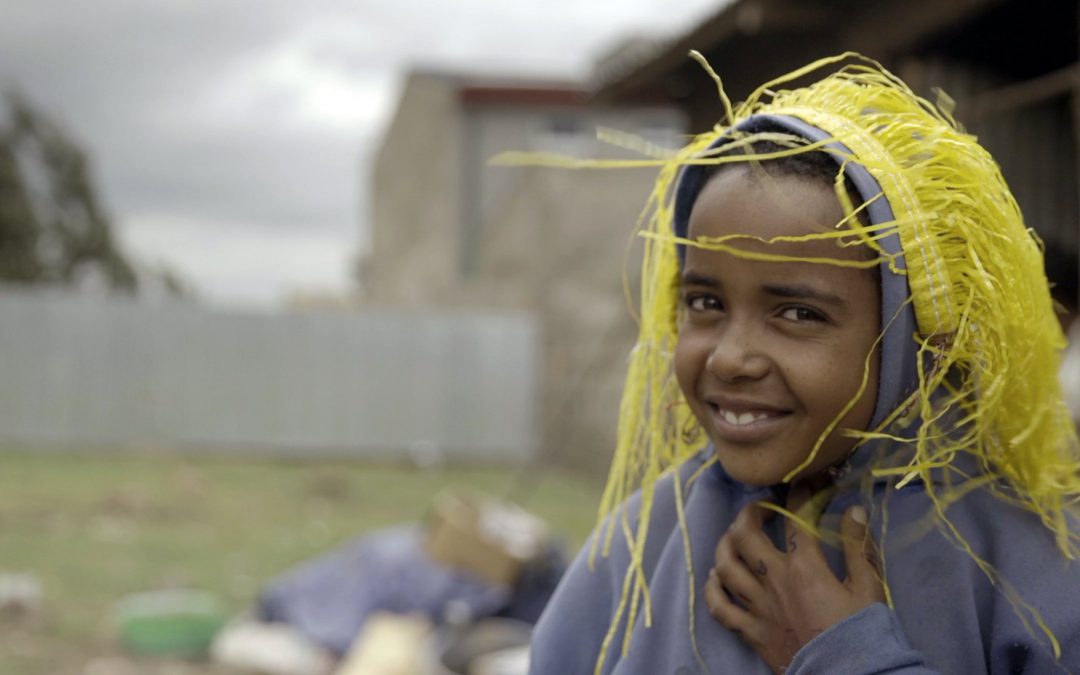Released at the 2019 MountainFilm Festival, Anbessa tells the story of ten-year-old Asalif and his fight against modernization in his Ethiopian community. The film is directed by Mo Scarpelli, previously known for her 2015 documentary Frame by Frame, which also screened at Mountainfilm in 2015. Scarpelli spent over two years in Ethiopia and shot the entire documentary in less than six weeks. The film employs Nichols’ observational mode as none of the subjects acknowledge the camera’s presence whatsoever. Anbessa should be noted for its effective use of cinematography, especially within running and reaction shots. Sound is utilized to highlight differences between the rural and modernized communities, Asalif’s own fears, and his confidence when pretending to be a lion. Lastly the recreation of Asalif’s dreams should be noted for their unique style and genre-bending effect. The symbolic aesthetics and borderline depressing themes make Anbessa unique and memorable.
The narrative follows ten-year-old Asalif, living in a rural Ethiopian village that is slowly being urbanized. As an imaginative boy, he spends most of his days exploring and searching for scrap electronics which he fixes and transforms into toys. Asalif is pitted directly against modernization as the newly built condos create an unbalanced class system within his community, leading to social strife. He also faces irrational childlike fears, such as an imagined hyena and a powerful windstorm. Overcoming these fears by pretending to be a lion, Asalif uses his imaginative practices to cope and face his obstacles head on.
Speaking with several audience members, opinions on the film were scattered, but the universal comment was that the cinematography was done beautifully. Shot by Scarpelli herself, the film tends to follow Asalif from behind as he guides the audience through his village. This shows his confidence and familiarity with the area, which ties back to the theme of imposing modernization and condos being built in vicinity. The reaction shots within the film should also be noted, not for their composition, but for the emotion held within. In one scene Asalif watches his friend who is a resident of the condos, turn on a television set and begin to tinker with the channels. This reaction becomes ten times more powerful after seeing him play snake on a rewired flip phone, while inside his mud hut. There is a vast difference in the source of entertainment between the two boys and the look says it all.
Sound is very prominent in the film, so much so that you begin to feel a part of the world on screen. Most of the film utilizes Foley sound to emphasize the outdoors and natural world that the characters live in. Footsteps against gravel, throwing rocks, and wind are very prominent sounds used for scenes exploring his village. In scenes near the condos, the soundscape becomes less rich and much more basic. To emphasize the childlike perspective, bass heavy sounds are used when visualizing Asalif’s fears, for instance a wind storm. These sounds create a much more intimidating feeling that the audience can interpret a bit easier. Lastly, to emphasize confidence, actual lion roars are mixed with Asalif’s imitation roars, to show how powerful he feels while pretending.
The film pushes the definition of being a documentary through its use of recreations. Much like The Thin Blue Line, its recreations make its status as a documentary questionable. Anbessa uses recreations to portray Asalif in strange situations, like a windstorm, climbing a tree, and being chased by a hyena. Scarpelli explained afterwards that these sequences were taken from descriptions of Asalif’s own dreams. The visualizations were created to characterize his own fears. They are mixed in throughout the film to effectively. Because they aren’t candid moments, it could be argued this film doesn’t aim to present itself as an objective documentary. Documentaries such as this push the boundaries of the genre, and recreated dreams could be an important part of the future of documentaries.
Anbessa may have some length issues but overall, I enjoyed it. It used long takes to show emotion and sound to enhance the entire immersive experience. The theme of rural against modernization is prevalent, and the dream scenes were also an interesting and added a new aspect to the documentary. Overall the film provides a strictly observational look at the character of Asalif and a meaningful story about modernization in third world countries. Anbessa‘s unique observational approach to documentary filmmaking is highly memorable and the reinforced themes of modernization make for an overall aesthetically pleasing film with a message, one that will not be forgotten.


Recent Comments